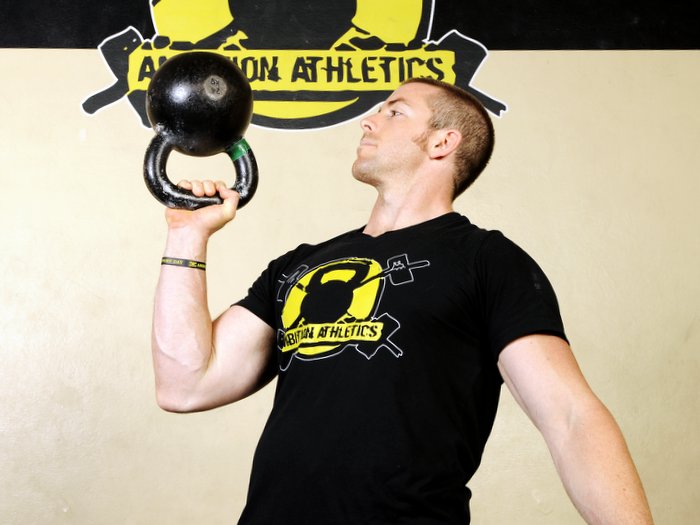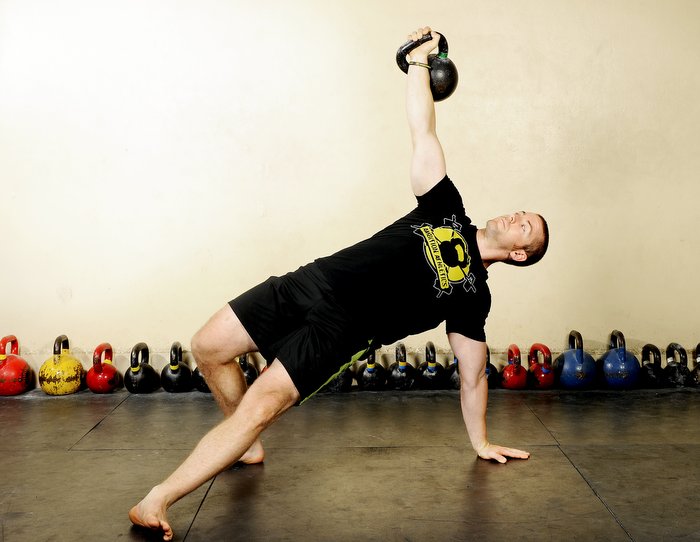Kettlebell Freedom
By Max Shank, Master RKC

For the past ten years, I have had the extreme pleasure of helping people get stronger, faster, and more flexible. My mantra and phrase that defines who I am and what I do is, "Give people the freedom to pursue any athletic endeavor for the rest of their lives".
During the course of this journey, I have had the opportunity to travel all over the world teaching seminars, leading
RKC and
RKC-II certifications, and speaking at events.
A key concept I teach is the importance of being able to complete a training session without first overcoming multiple barriers. It’s important that you have something you can do quickly, that doesn’t require a lot of fancy equipment, and that doesn’t require you to drive to a gym. This is key for long term consistency, the biggest factor in your fitness and health success.
You need something you can do at home with minimal or no equipment. Even if you regularly go to the gym, you still need a go-to "plan B".
As I've gotten busier professionally, I've fallen in love with the kettlebell again. In fact I may be in love with it more than ever.
Kettlebell training is efficient, effective, variable, and simple.
But, with great power comes great responsibility. While the kettlebell is a truly exceptional tool, it is also dangerous if used improperly.

In our entertainment-driven culture, we mainly see the fanciest and most creative kettlebell moves—likely the final product of a lot of practice.
One of the things I love the most about
kettlebell training is the freedom of movement. This potential for creative movement should be encouraged and allowed to grow organically. But, it is also why laying a proper foundation in kettlebell training is so important. Taking time with the basics allows you to move forward safely—forever.
Before you start using kettlebells, be sure to ask yourself the following questions:
- Do my hips move?
- Are my hips strong?
- Does my core stabilize my spine? Or does my spine try to compensate for my hips?
Unfortunately, around half of all new exercisers have little to no control over their core and their hips. Another 40% have control, but lack the coordination to make them work together. Only 10% have it all sorted from the get-go! Because of these numbers, as a teacher and a business owner, I have to maximize safety by using some very specific tactics.
Today I'd like to share one of those tactics with you. I hope that it helps you progress, so you can safely get to the really fun stuff.
If possible, spend about 30 seconds with each of these drills:
1. You must make sure the hips are mobile. I like practicing movements from half kneeling.
2. Once the hips are mobile, glute activation is necessary. Any bridging variation will do, but the choice should be appropriate and easy for the athlete.
3. Lastly, lock in this new pattern with concurrent core activation and hip mobilizations. Knee tucks from a push-up position work great here.
The key concept here is to teach the spine to stay stable by using your core. Then, you drive the movement with your hips. Stabilizing the spine with your core and driving the movement with your hips is 100% necessary for the foundational movements of kettlebell training—the swing and the deadlift.
But on its own, proper technique isn't enough to ensure safety and results. You need to have a logical progression, AND must properly prime the body for the task at hand. These are the primary reasons I created
Kettlebell Essentials. I wanted to share a safe and logical path that would give people the freedom to pursue any athletic endeavor for the rest of their lives. If you follow the progressions and practice the movements, then you're basically guaranteed that freedom for a lifetime.
Better every day,
-Max
 Master RKC Instructor Max Shank is the owner of Ambition Athletics in Encintas, California. He is very active in martial arts, competes in the Highland Games, and promotes a holistic approach to overall fitness. For more information about Max please visit www.ambitionathletics.com
Master RKC Instructor Max Shank is the owner of Ambition Athletics in Encintas, California. He is very active in martial arts, competes in the Highland Games, and promotes a holistic approach to overall fitness. For more information about Max please visit www.ambitionathletics.com
Max Shank is the author of Master the Kettlebell, now available in paperback and ebook format.
He has also released Kettlebell Essentials, an on-demand video course and Ultimate Athleticism, an ebook and training program.
Back